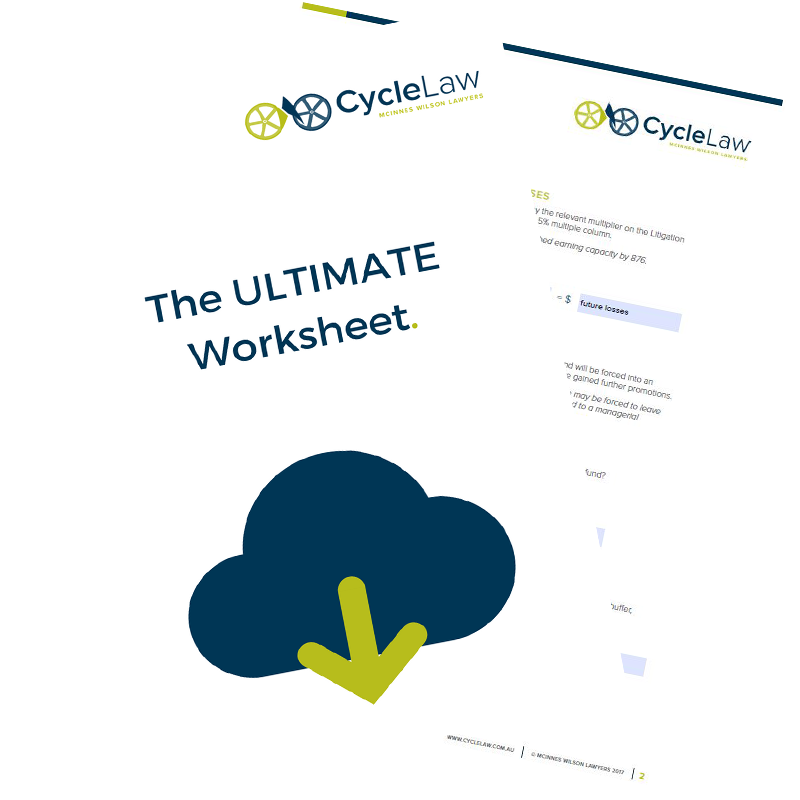
Emily Billiau
Principal
Care costs can be the single most significant component of a claim.
Particularly when the injured party doesn’t work (therefore doesn’t have significant income loss) but is seriously injured.
How much is my claim worth?
It's a big question.
And one that is asked by every claimant we see.
Unfortunately, the answer is never straightforward – mostly because there are many factors that significantly influence the overall amount awarded.
The amount of compensation that a person receives is known as quantum.
As we learn through this four-part series, there are a number of areas under which you can determine what your quantum is and in turn, discover how much your claim is worth.
The second topic we will be covering is care costs.
Be sure to read our first article on future economic loss first.
What are care costs?
Care costs relate to an injured party inability to complete daily living tasks.
The idea is the amount of money received under this head of damage will pay for another person to assist with daily living and maintenance task.
The care can be provided to you by friends, neighbours or relatives, or you may have engaged paid services to undertake the tasks you could not perform yourself due to your injury.
Legislation in Queensland imposes threshold care requirements in cases of motor accident injury or public liability claims, and there are increased restrictions on care claims when claiming for a work injury.
How much can you get for it?
Again, this is dependent on the level of care that is required based on your unique circumstance.
What factors influence it?
Example 1 – Bicycle Car Accident
Jack was an 25-year-old, training for the cycle leg of an upcoming triathlon. He was riding in the streets close to Mt Cootha and as he crossed an intersection with a green light, a car sped through a red light and straight into Jack.
Jack was left quadriplegic. For the rest of his life, will require assistance with feeding, toileting and bathing. All movement around his house, getting in and out of bed, and any daily errands will need help from another person.
His claim for compensation included daily care to assist him in completing tasks as well as home maintenance, garden care and driving services. His care cost totalled $2.5 million.
Example 2 – Inferior Infrastructure Accident
Angie was cycling along a bike path on her way to work. Angie slowed as she approached a stretch of the path that she knew was slippery due to the surface material. She had heard of other cyclists having accidents at that same spot before.
Despite her efforts to stay safe, Angie's wheels had slipped on the surface. Angie instinctively held her arms out to catch herself. By doing so, Angie fractured both her wrists. She required surgery to correct her fractures and her surgeon indicated that recovery would likely be slow. Because of her injuries, Angie could not longer complete household and personal care tasks. She relied on her husband and as well as some commercial help in the form of a cleaner for around 8 months.
Angie’s claim for care totalled $35,000. The money covered the cost of her cleaner and compensated her husband for his time assisting Angie.
What care is covered?
Did you know you can also claim for the help your friends and family provide?
It’s known as gratuitous care.
Confusing title aside, it relates to any voluntary work of third parties (like your friends, family (including your partner), neighbours, and very kind strangers) who assist you in any of the above tasks.
IMPORTANT: Under legislation in Queensland, a person can only claim for gratuitous care if:
- The care is different from any help previously provided
- The care was/is provided for at least 6 hours a week and for at least 6 months.
Take for example....
If your mum helped look after your children one day a week while you work, and she continued to assist while you were off work recovering, that assistance could not be claimed for after the accident.
However, if she helped out an additional day (over 6 hrs of unpaid work) after the accident and that help continued for six months or more that care can be claimed for.

Emily Billiau
Principal
What evidence will you need?
You will need to prove that you completed the tasks before the accident.
For personal care tasks (such as showering, cleaning your teeth), it’s assumed you would have completed tasks those tasks yourself.
For jobs such as cooking, cleaning, garden care and child care, evidence is needed to show that you were responsible for some or all of these tasks within your household.
Equally so, you will need to put a monetary value on the work that you do.
Some examples of evidence might include:
- Testimony from partner, or someone living with you of the jobs you usually do around the house
- Tax invoices and receipts for commercial care post accident
- Quote for commercial care (such as a gardener, cleaner, nanny etc.)
- Record of help provided by friends and time allocated
- A medical note from a medical professional on your ability to complete daily tasks
- Written testimony from friends and family of the hours worked and tasks that were undertaken.
Keeping a record of care provided since the accident is crucial
Keeping a record of the care and assistance provided to you due to your injuries is very important, as it can mean the difference between having a claim for care and assistance, or not having such a claim at all.
Keep a spreadsheet that details the following:
- Type of care (paid or unpaid)
- The service provider (company or person's name if unpaid)
- Kind of service provided (i.e. mowing, laundry, cleaning)
- Date and duration of service
- Cost of service (if paid)
- Will the service be required in the future and how often
To help ensure that you keep an accurate record, keep in mind the following helpful tips
- Keep receipts for any services that you have paid for;
- Photocopy or scan those receipts, in case they get lost or destroyed;
- Consistently fill out the table as each service is provided;
- Ask the service provider to give you an "Itemised Account" that details the dates and costs of each service when they are performed
No good compensation claim is without Future Economic Loss.
Like the saying – don’t put all your eggs in one basket - don’t forget to read the rest of the articles in this series on the other areas of compensation available to you.



























